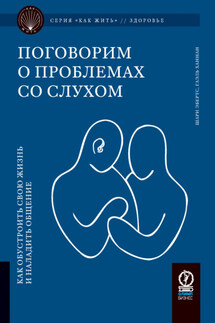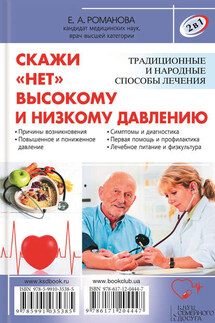Поговорим о рассеянном склерозе. Семь шагов к преодолению болезни - страница 17
Пример таких пациентов, как Оньека, учит нас не обращать внимания на то, что нам неподвластно, и сосредоточиться на том, что мы можем изменить. Мудрый человек воспользуется всеми доступными средствами: и чудесами современной медицины, и поддержкой и информированием от глобального сообщества, и повседневными решениями в быту.
1. ‘MS on the rise in Australia but still fyl ing under our radar’, MS Research Australia, 1 May 2018, https://msra.org.au/news/ms-rise-australia-still-fyl ing-radar/, accessed 19 April 2021.
2. Culpepper, W. J., Marrie, R. A., Langer-Gould, A. et al., ‘Validation of an algorithm for identifying MS cases in administrative health claims databases’, Neurology, 2019, 92 (10).
3. Andravizou, A., Dardiotis, E., Artemiadis, A. et al., ‘Brain atrophy in multiple sclerosis: Mechanisms, clinical relevance and treatment options’, Autoimmune Highlights, 2019, 10 (7).
4. Kappos, L., Wolinsky, J. S., Giovannoni, G. et al., ‘Contribution of relapse-independent progression vs relapse-associated worsening to overall confirmed disability accumulation in typical relapsing multiple sclerosis in a pooled analysis of 2 randomized clinical trials’, JAMA Neurology, 2020, 77 (9): 1–9.
5. Siva, A., ‘Asymptomatic MS’, Clinical Neurology and Neurosurgery, 2013, 115, Suppl 1: S1–S5.
6. University of California, San Francisco MS-EPIC Team: Cree, B. A.C., Gourraud, P. A., Oksenberg, J. R. et al., ‘Long-term evolution of multiple sclerosis disability in the treatment era’, Annals of Neurology, 2016, 80 (4): 499–510.
7. Miller, D.H., Hornabrook, R.W. & Purdie, G., ‘The natural history of multiple sclerosis: A regional study with some longitudinal data’, Journal of Neurology, Neurosurgery and Psychiatry, 1992, 55: 341–346.
8. Beiki, O., Frumento, P., Bottai, M., Manouchehrinia, A. & Hillert, J., ‘Changes in the risk of reaching multiple sclerosis disability milestones in recent decades: A nationwide population-based cohort study in Sweden’, JAMA Neurology, 2019; 76 (6): 665–671.
9. Jongen, P. J., Ter Horst, A. T. & Brands, A. M., ‘Cognitive impairment in multiple sclerosis’, Minerva Medica, 2012, 103 (2): 73–96.
10. Willis, S. N. & Stathopoulos, P., ‘Investigating the antigen specificity of multiple sclerosis central nervous system-derived immunoglobulins’, Frontiers in Immunology, 2015, 6: 600.
11. Frischer, J. M., Weigand, S. D., Guo, Y. et al., ‘Clinical and pathological insights into the dynamic nature of the white matter multiple sclerosis plaque’, Annals of Neurology, 2015, 78 (5): 710–721.
12. Absinta, M., Lassmann, H. & Trapp, B. D., ‘Mechanisms underlying progression in multiple sclerosis’, Current Opinion in Neurology, 2020, 33 (3): 277–285.
13. Alcina, A., Abad-Grau, M. & Fedetz, M., ‘Multiple sclerosis risk variant HLA-DRB1*1501 associates with high expression of DRB1 gene in different human populations’, PLoS One, 2012, 7 (1): e29819.
14. McDonnell, G. V., Mawhinney, H., Graham, C. A., Hawkins, S. A. & Middleton, D. ‘A study of the HLA-DR region in clinical subgroups of multiple sclerosis and its influence on prognosis’, Journal of the Neurological Sciences, 1999, 165 (1): 77–83.
15. Williams, A., Eldridge, R., McFarland, H., Houf,f S., Krebs, H. & McFarlin, D., ‘Multiple sclerosis in twins’, Neurology, 1980, 30 (11): 1139–1147.
16. Sladek, T., ‘The MS mystery in Syracuse: Why do we have highest rate of multiple sclerosis nationwide?’, 5 November 2019,







